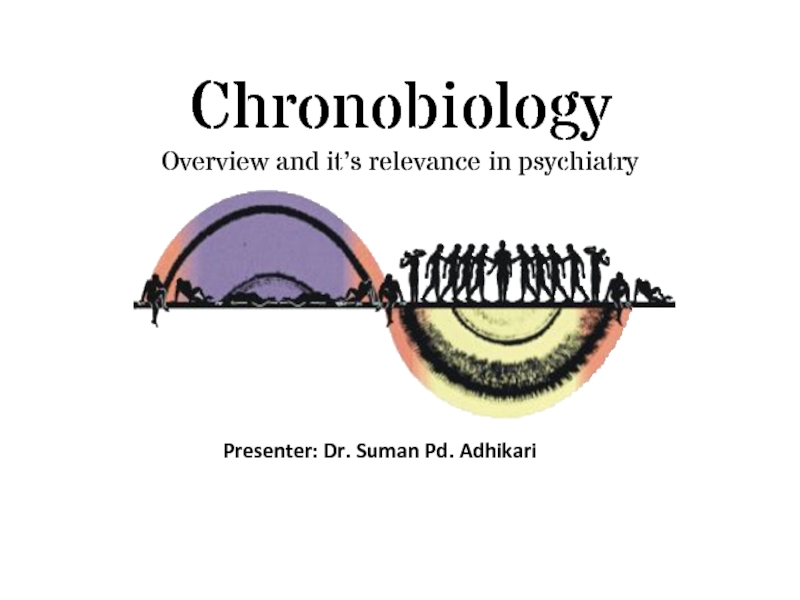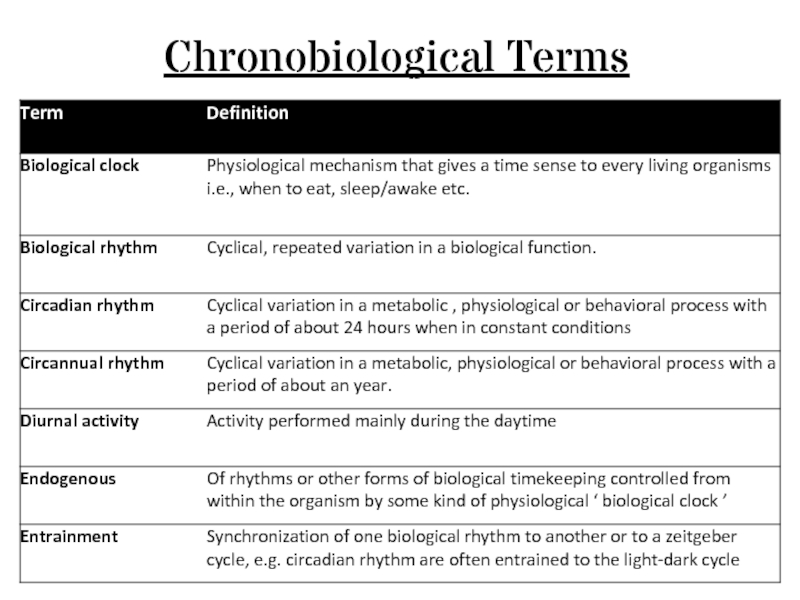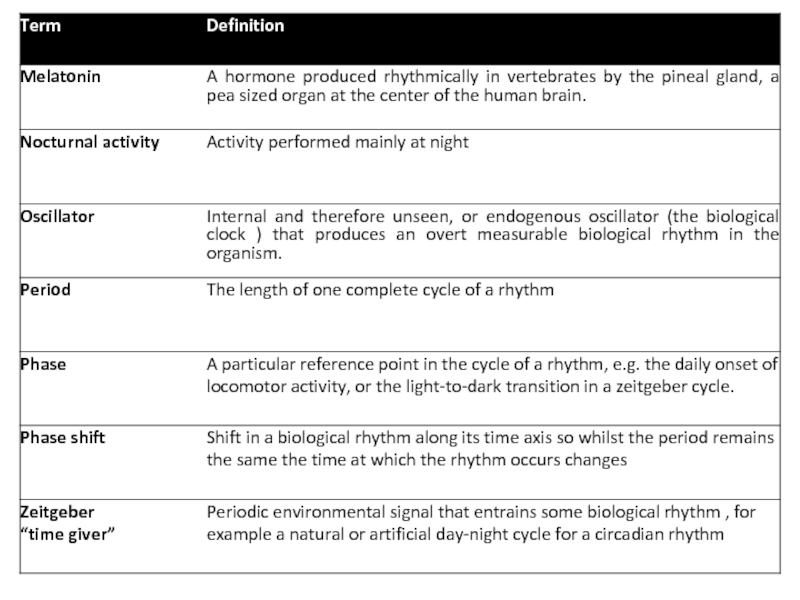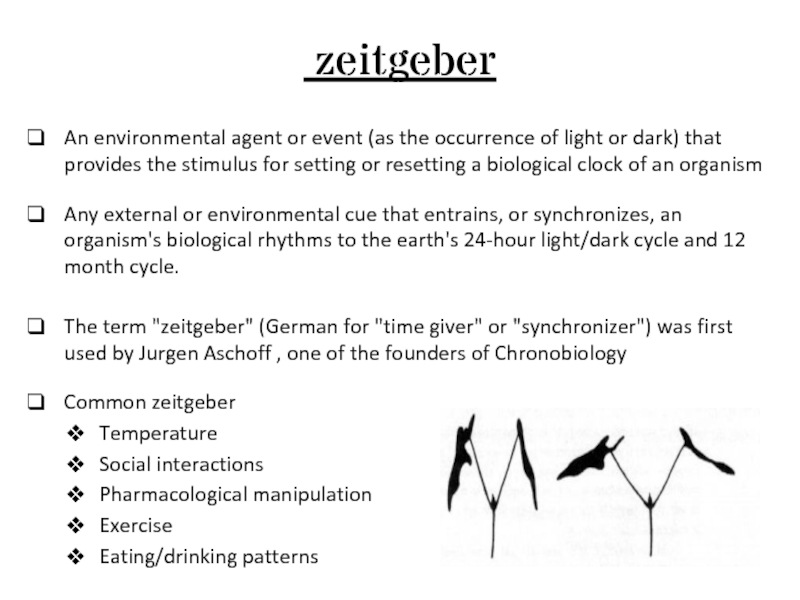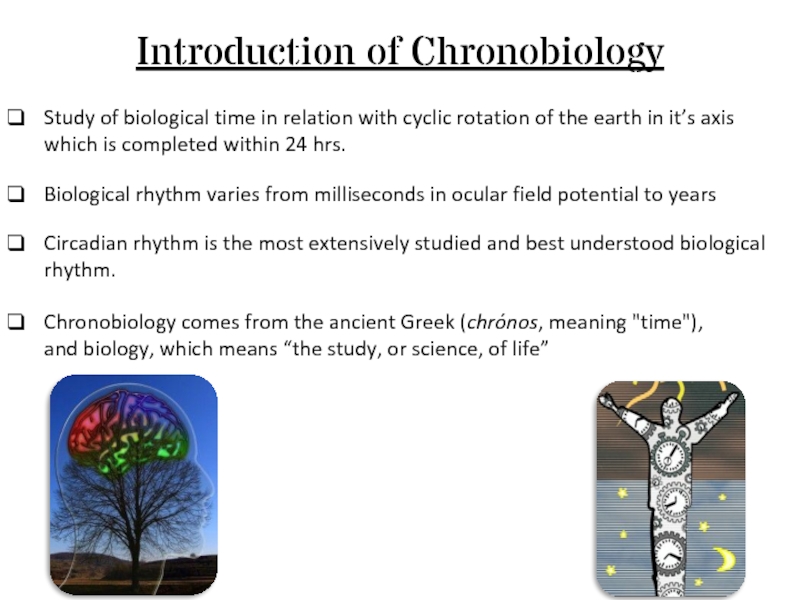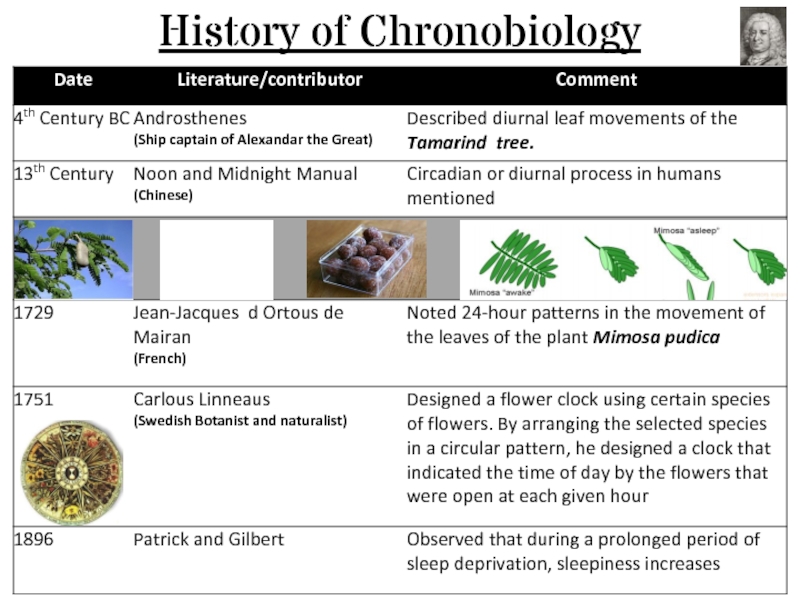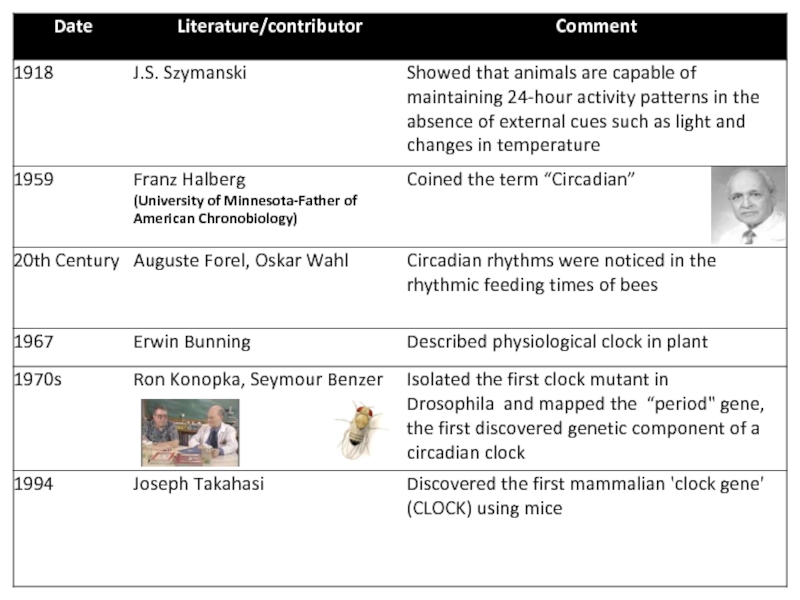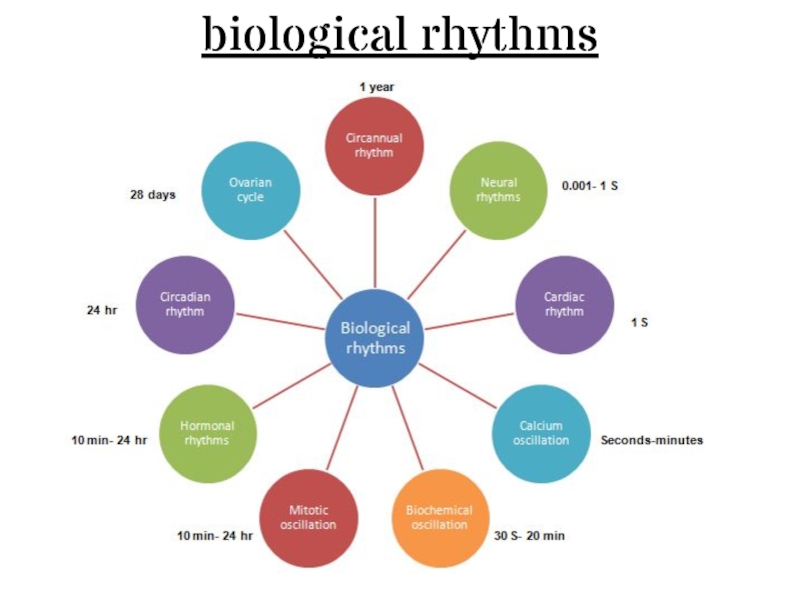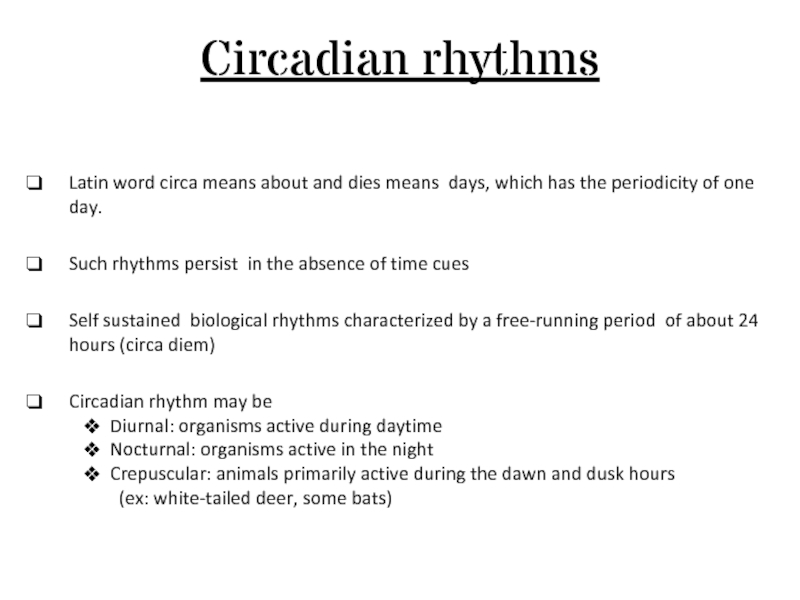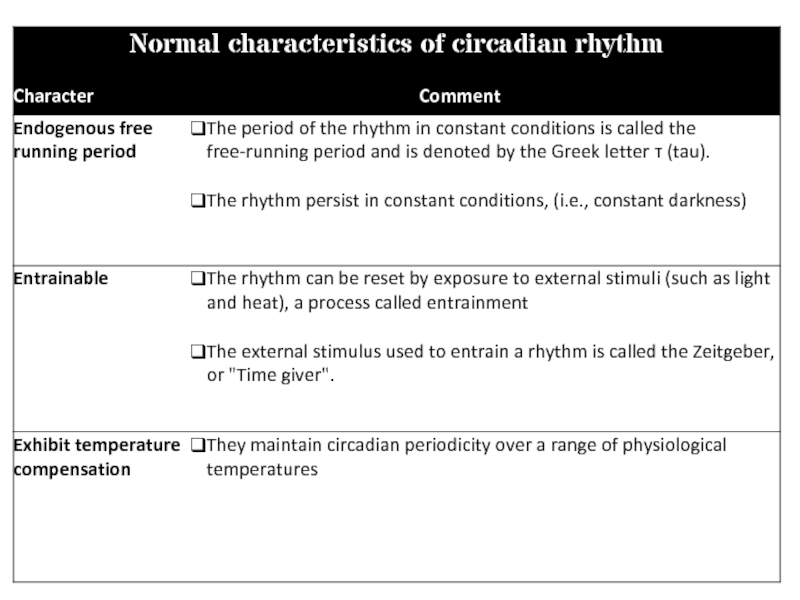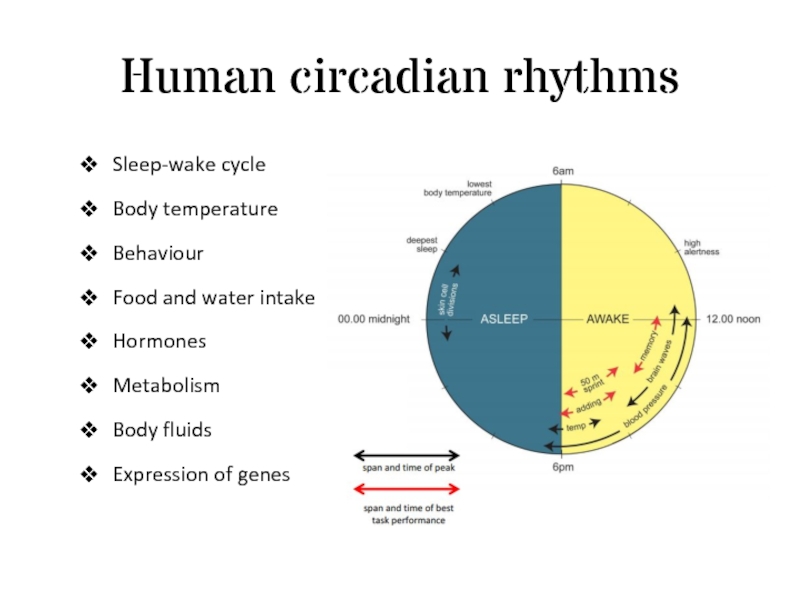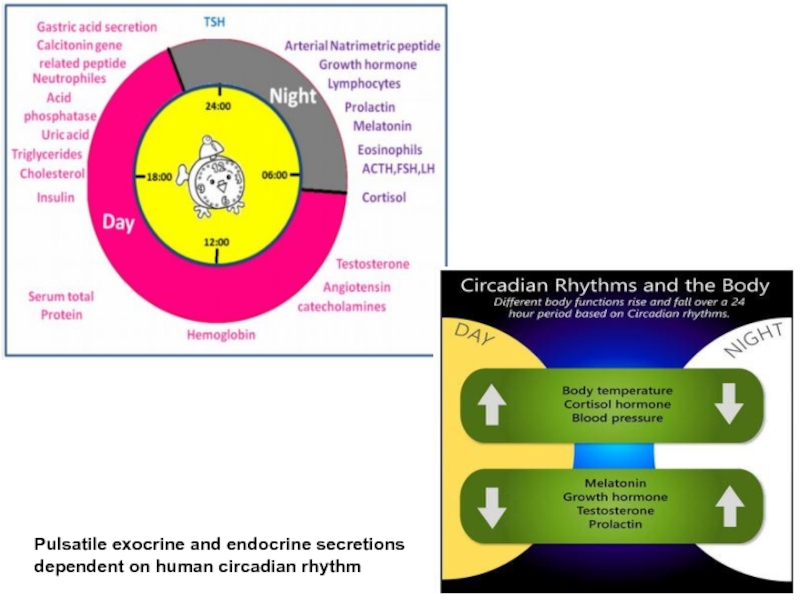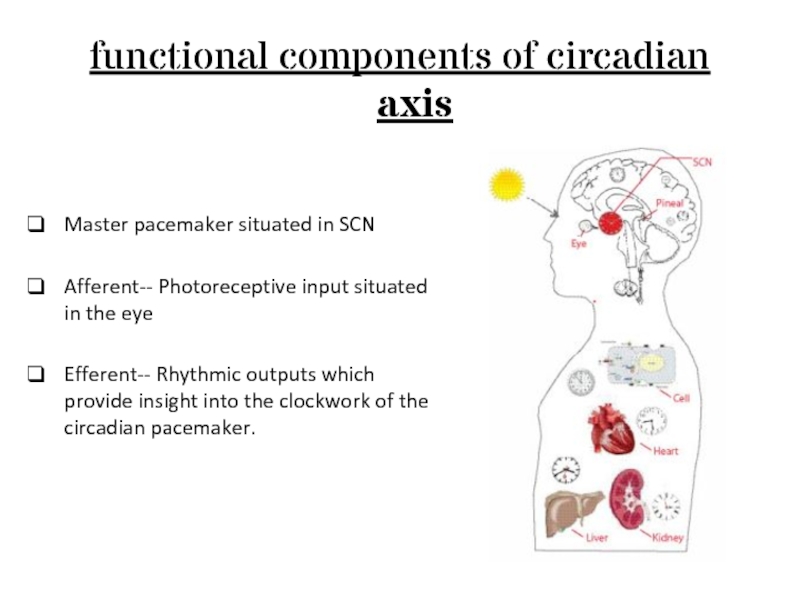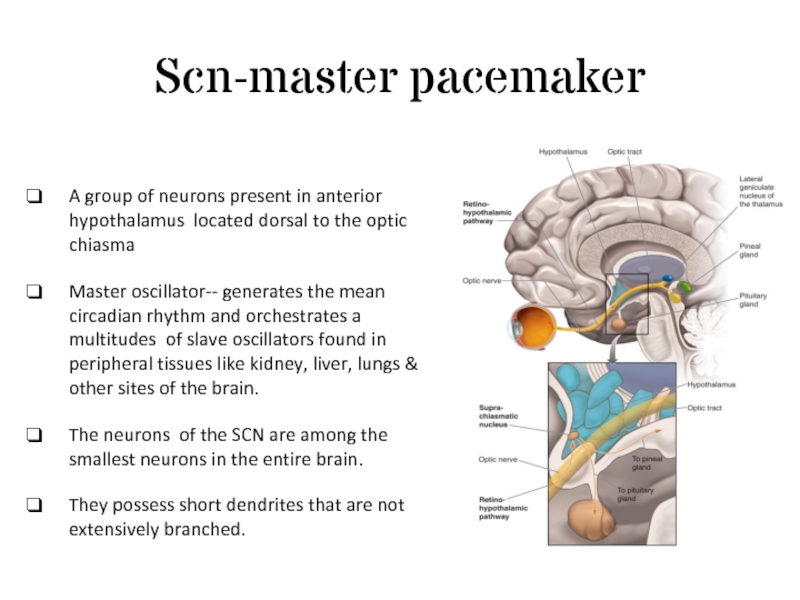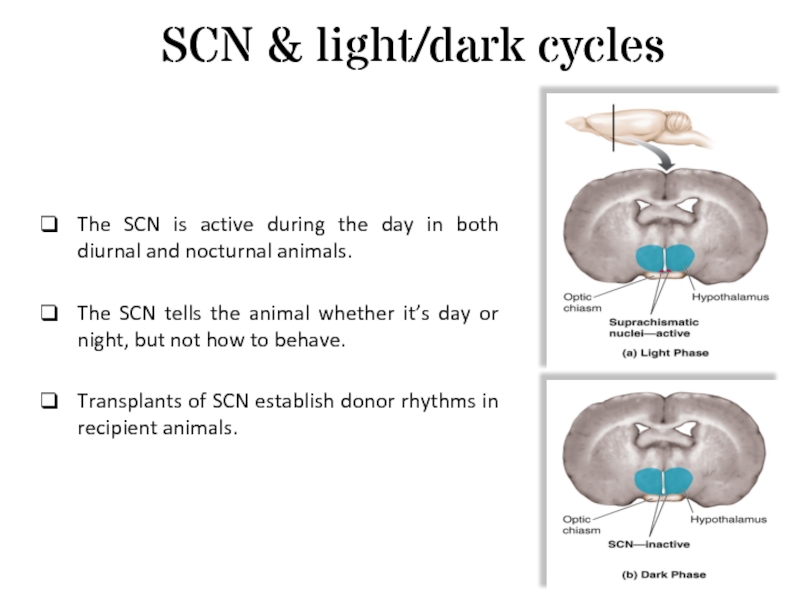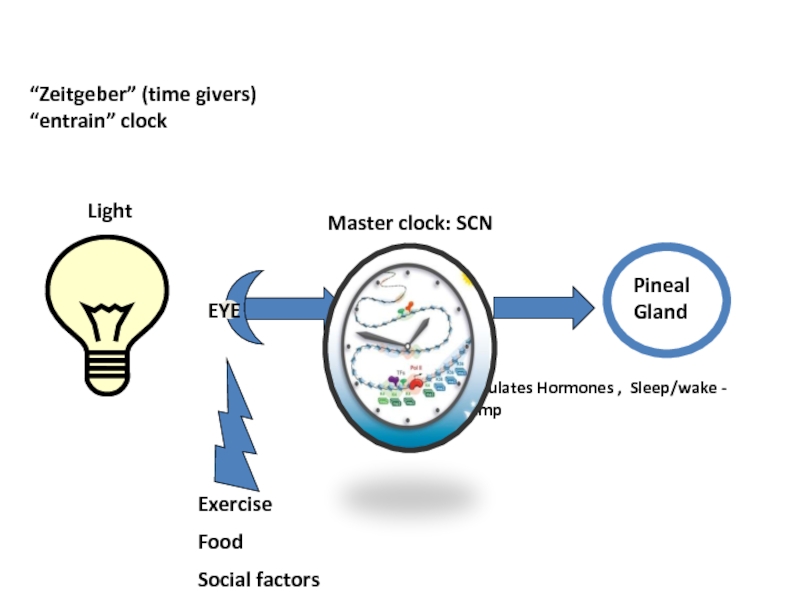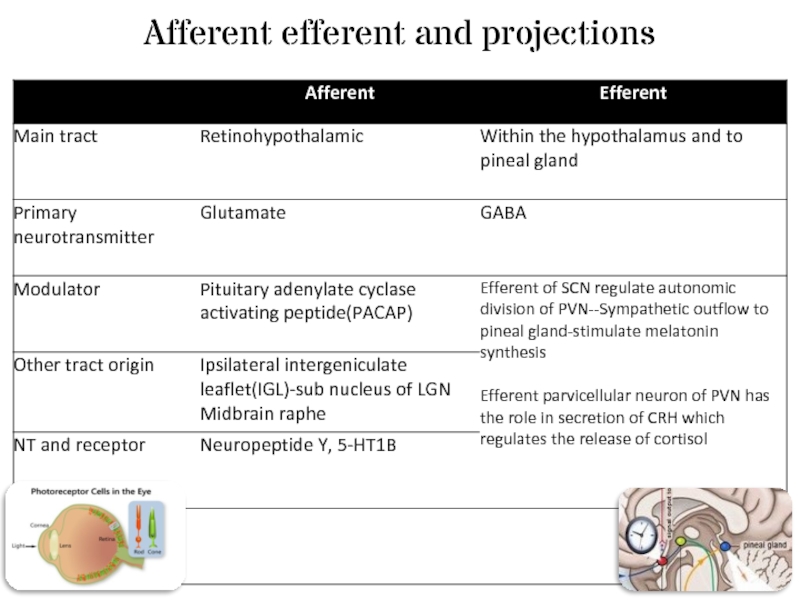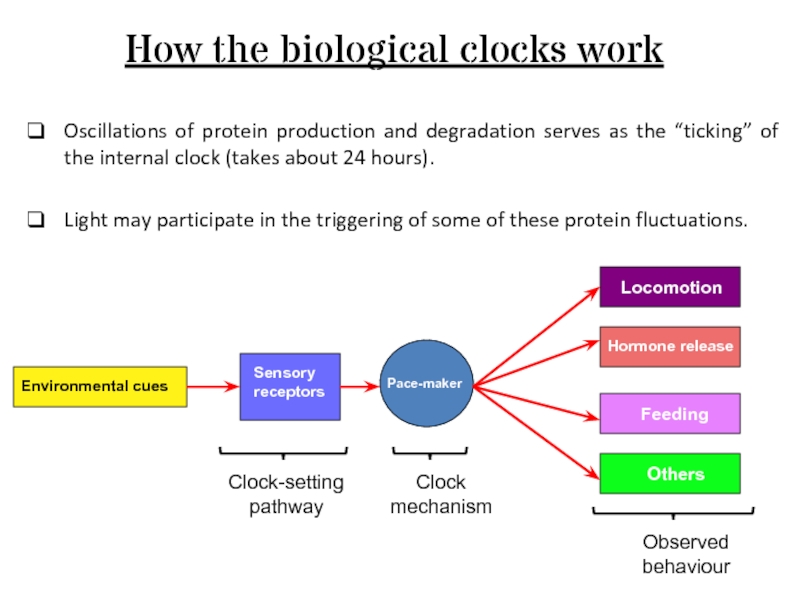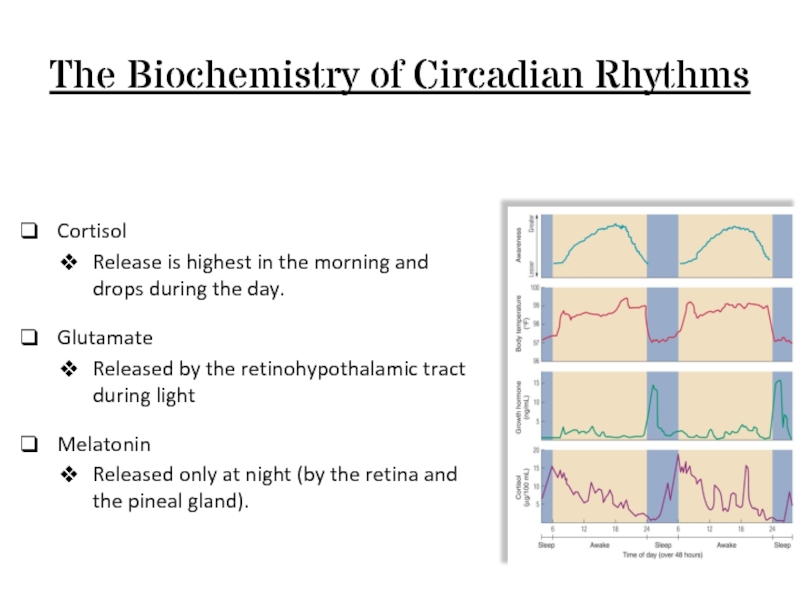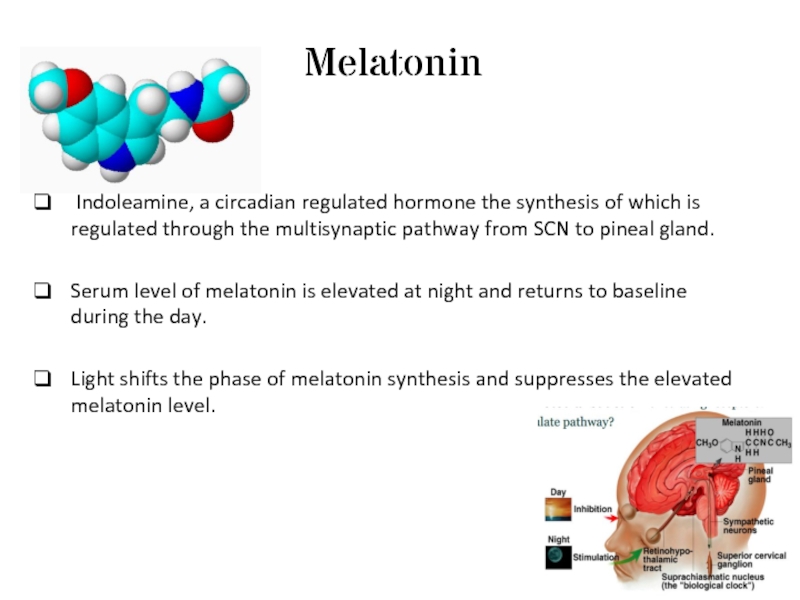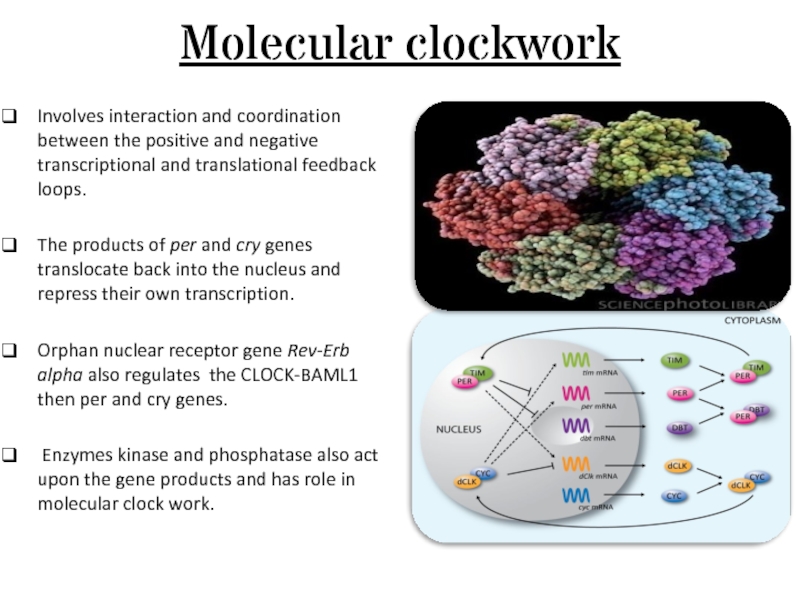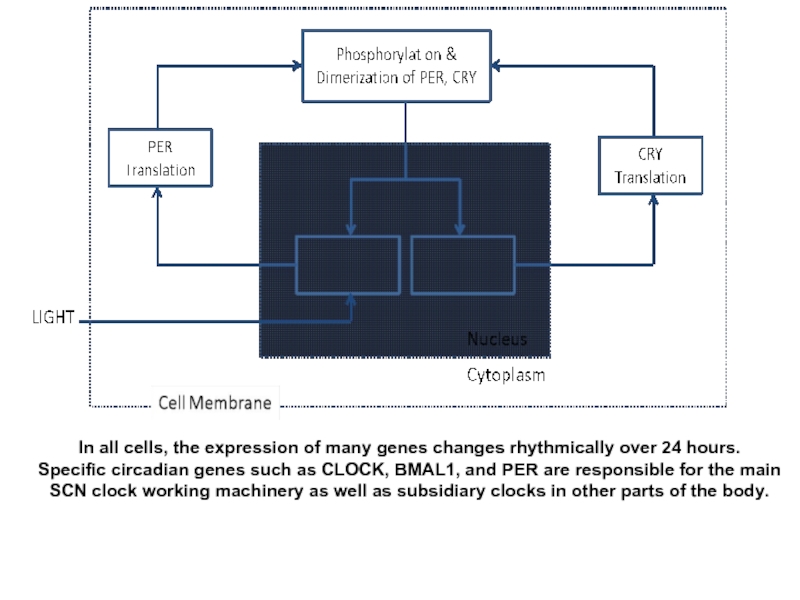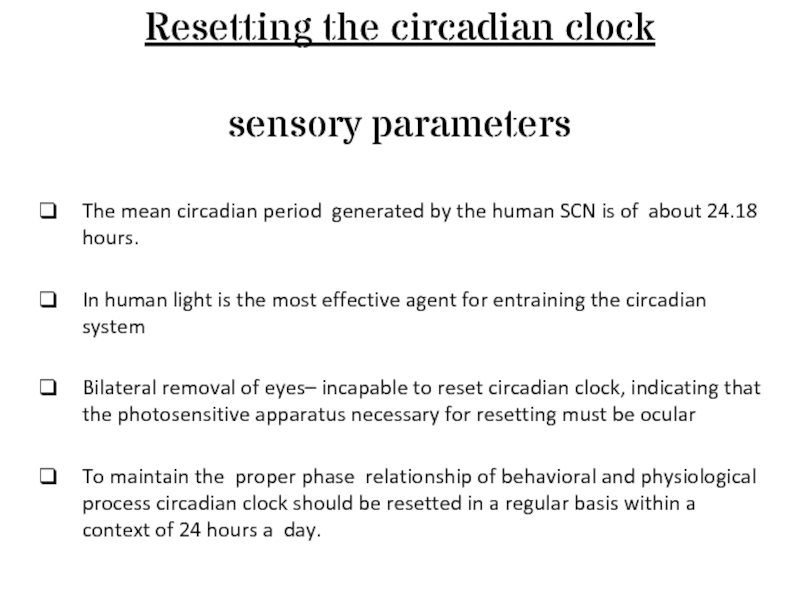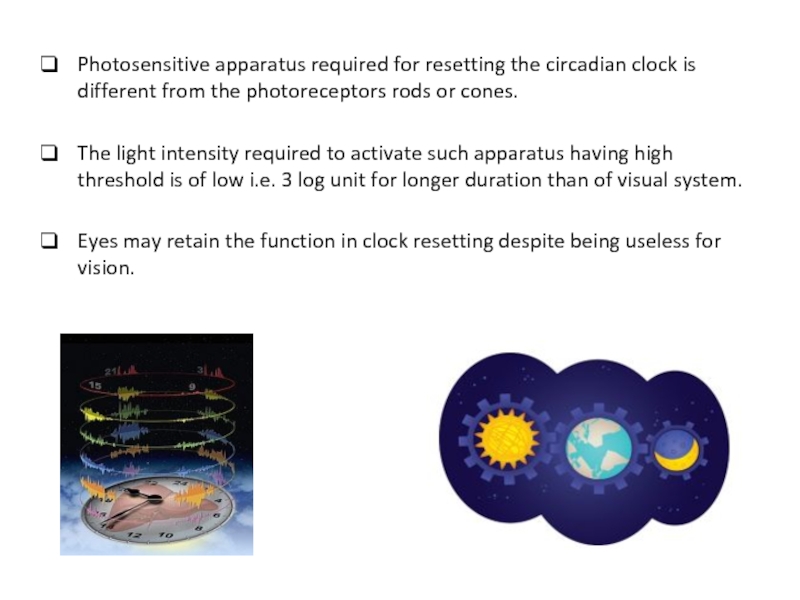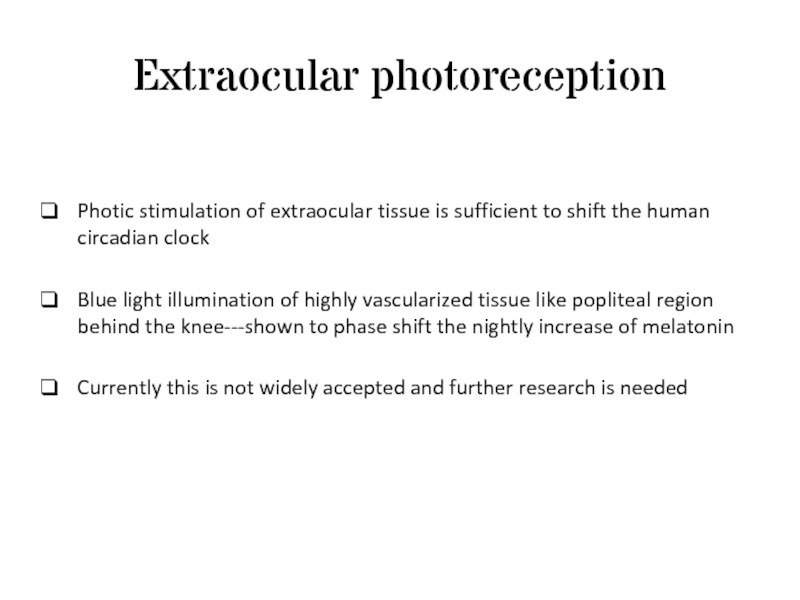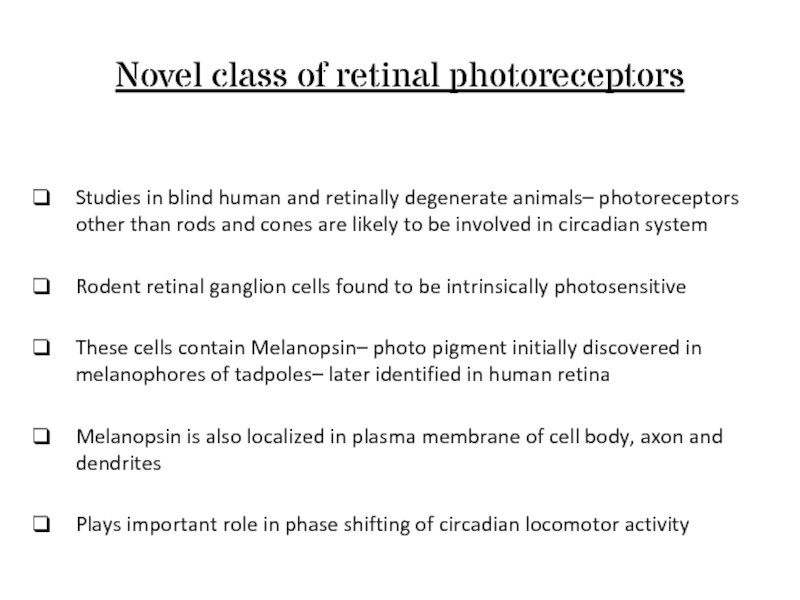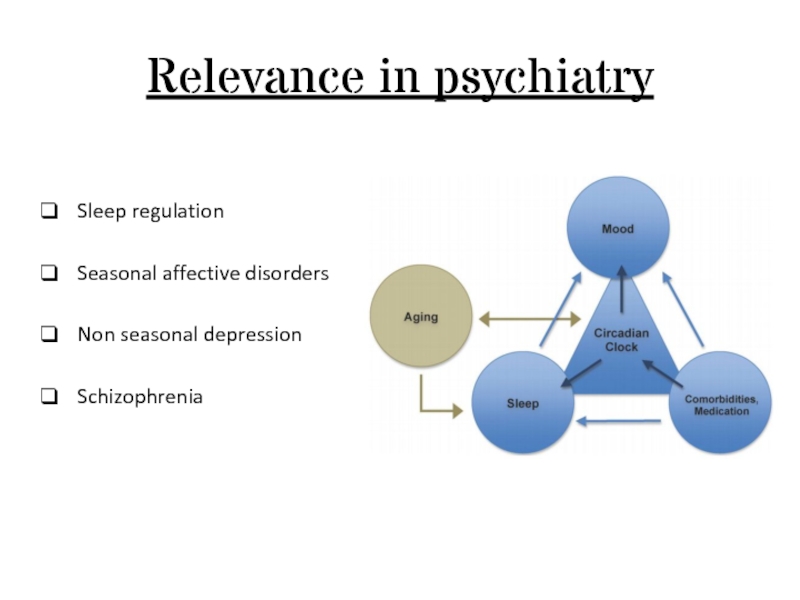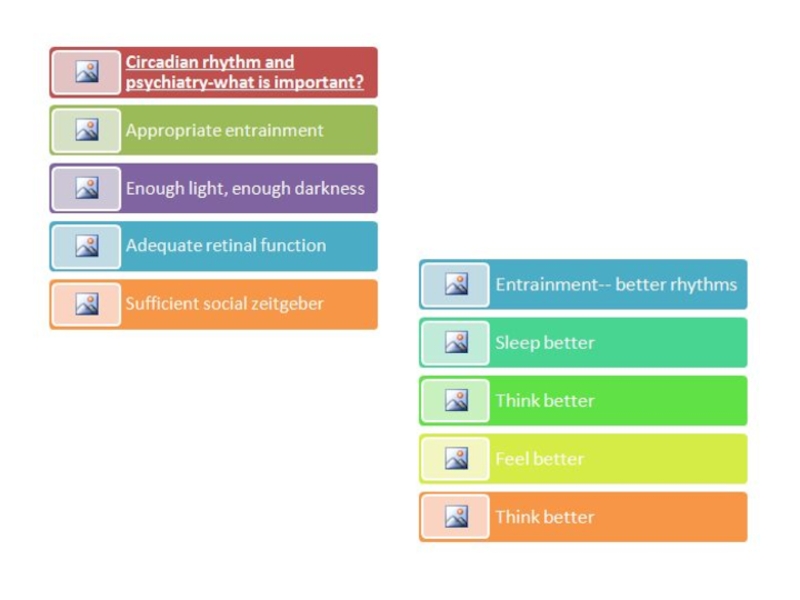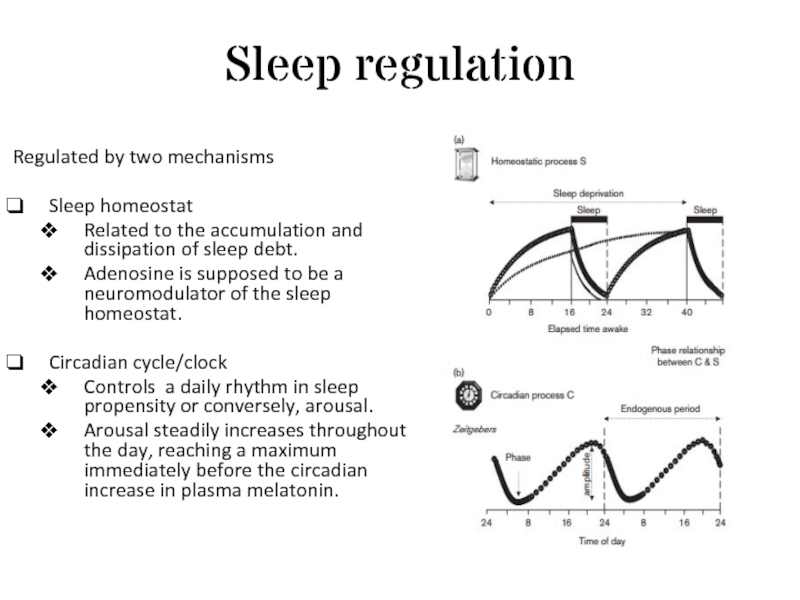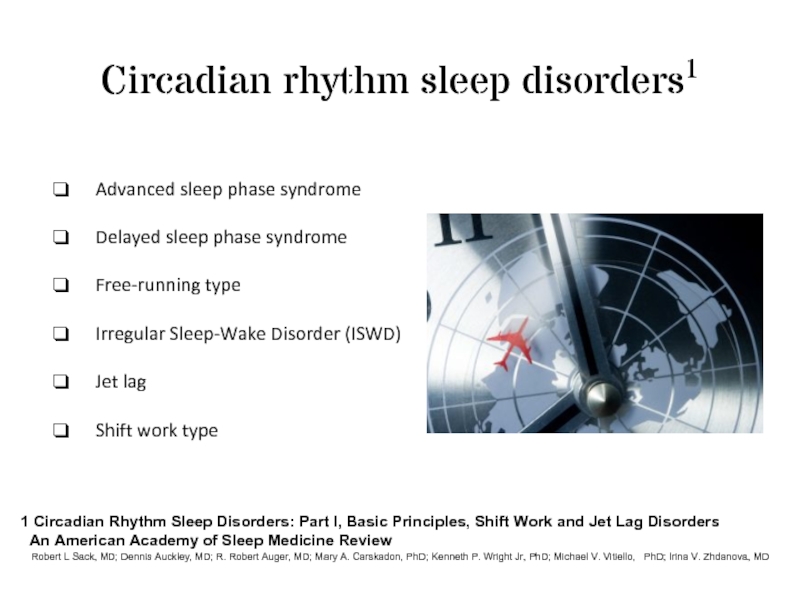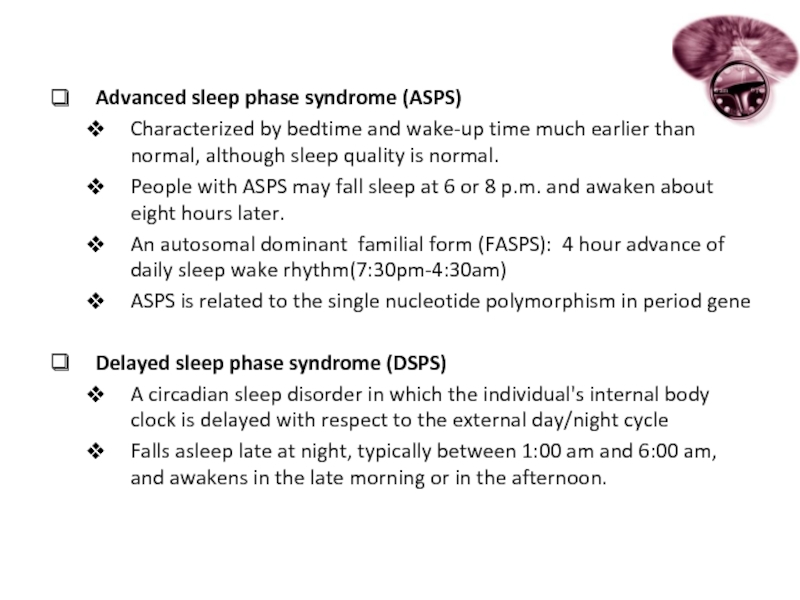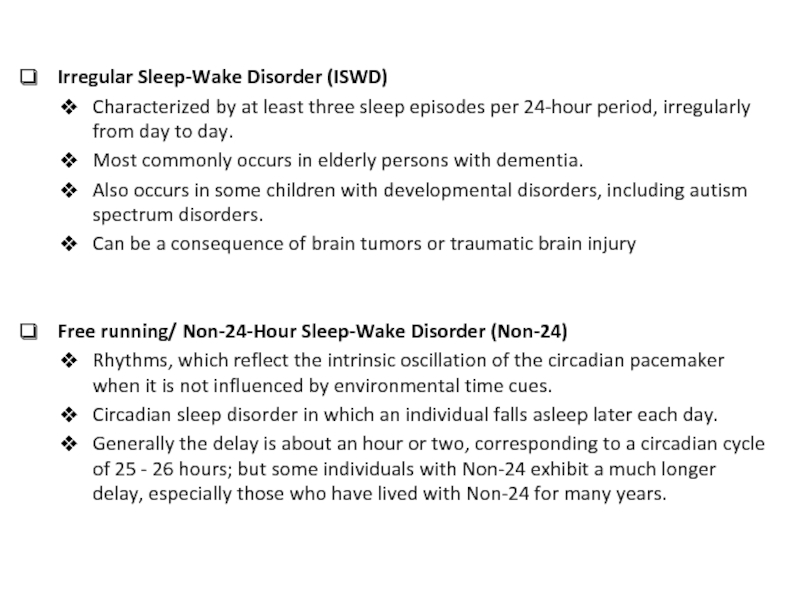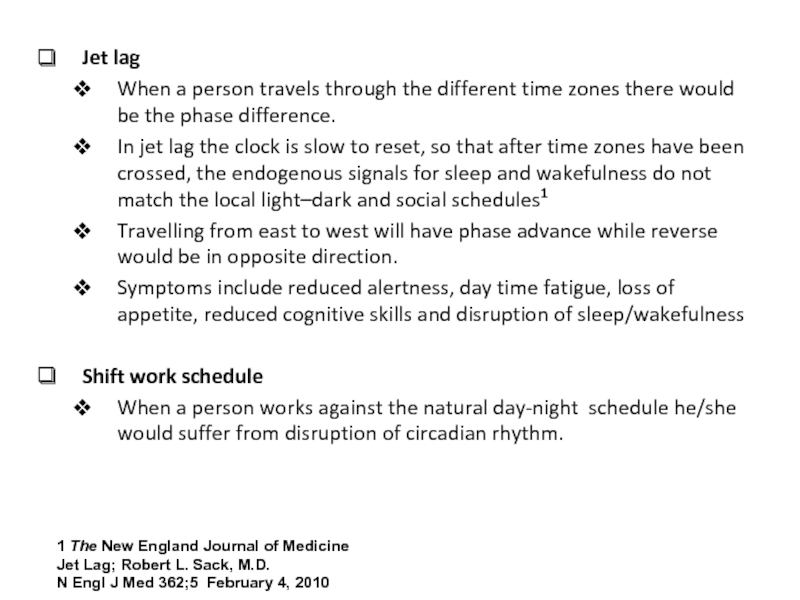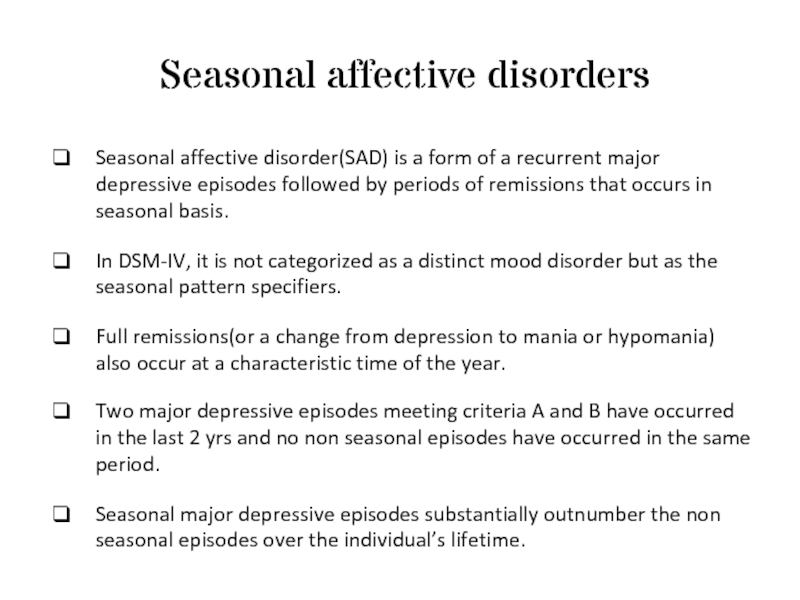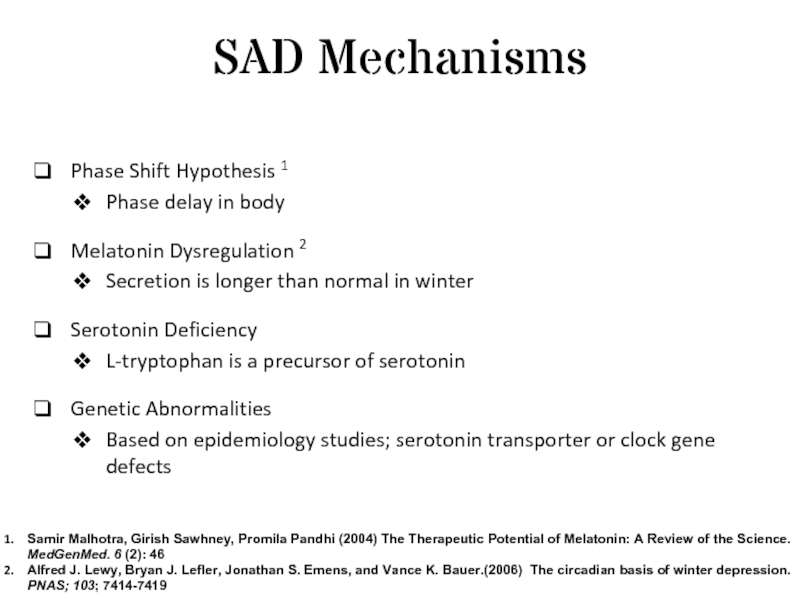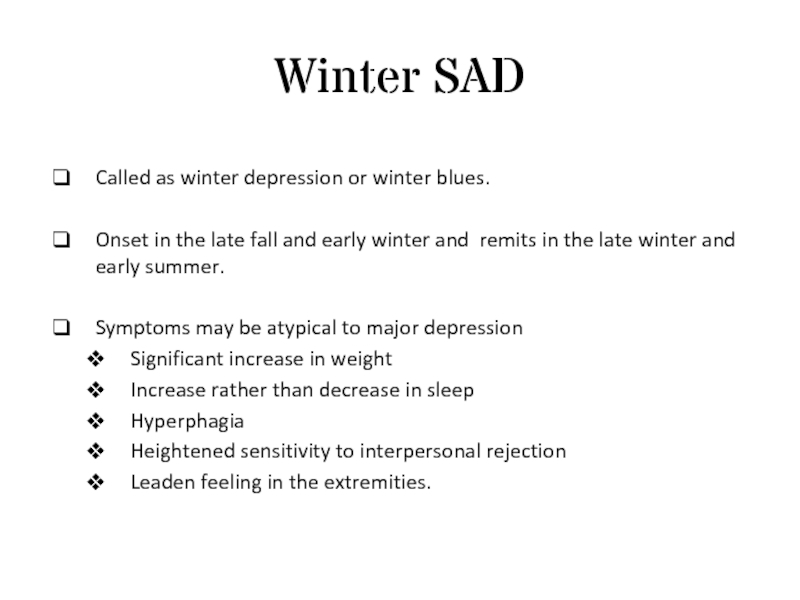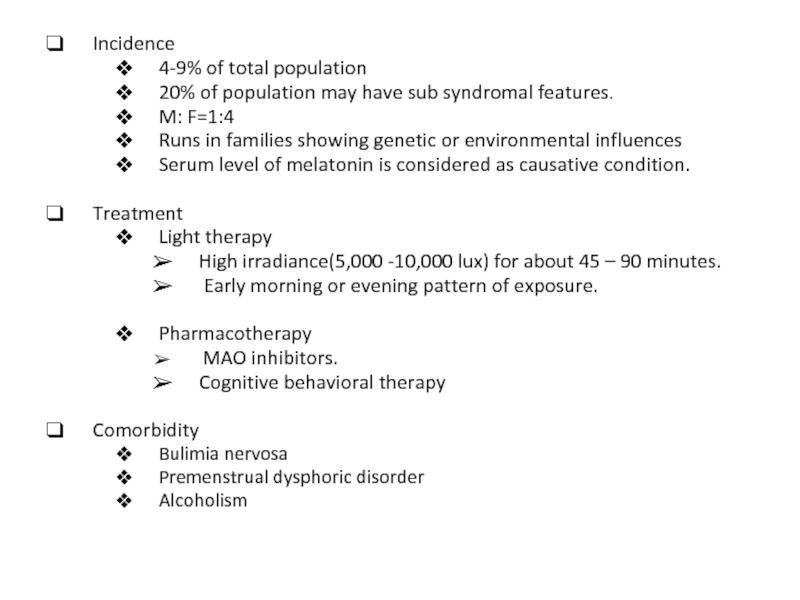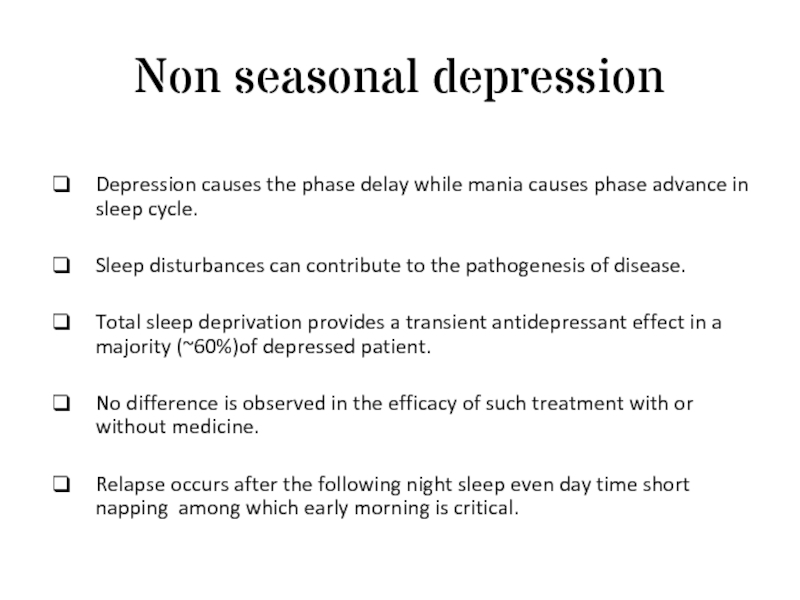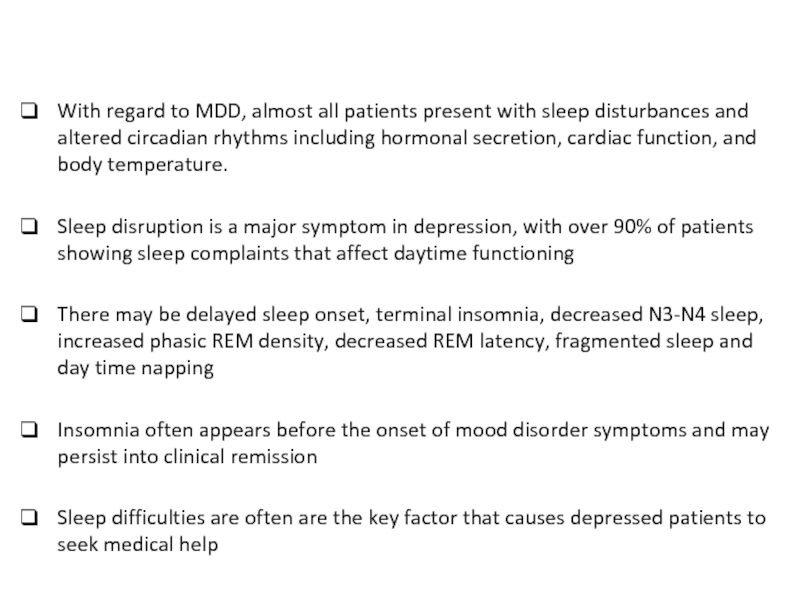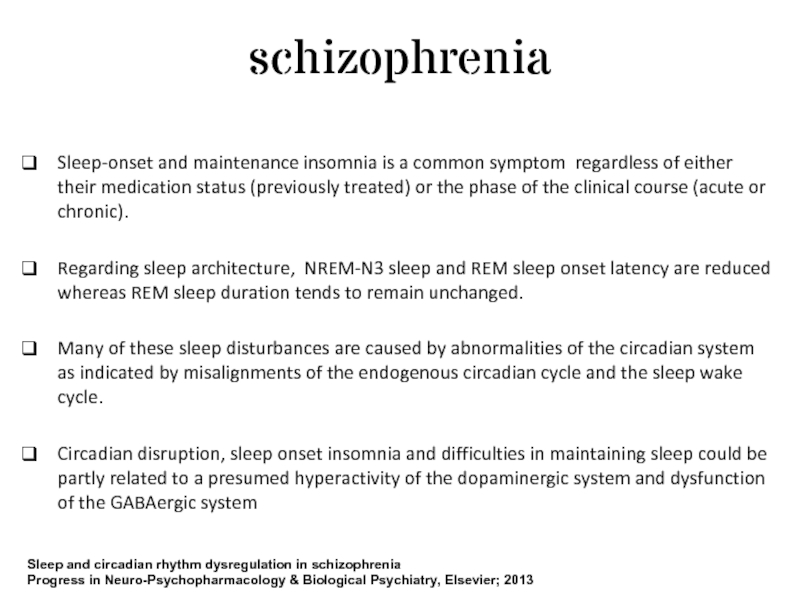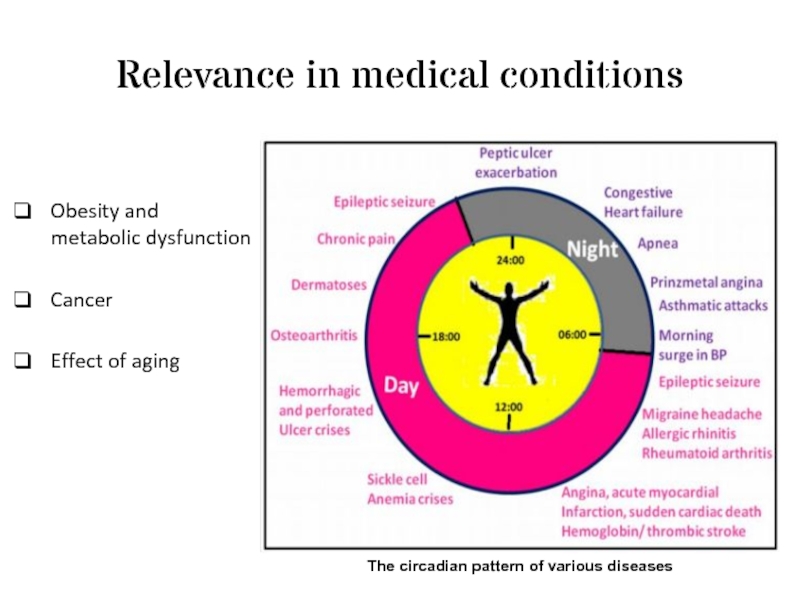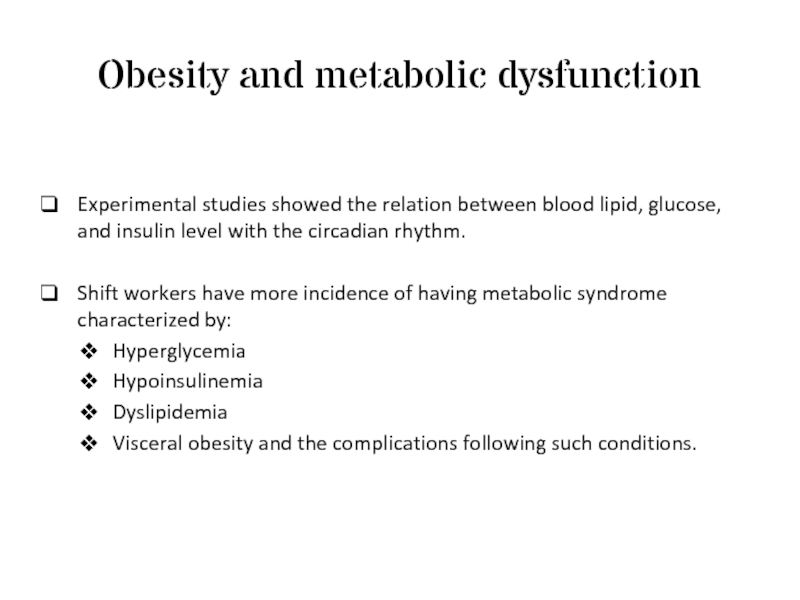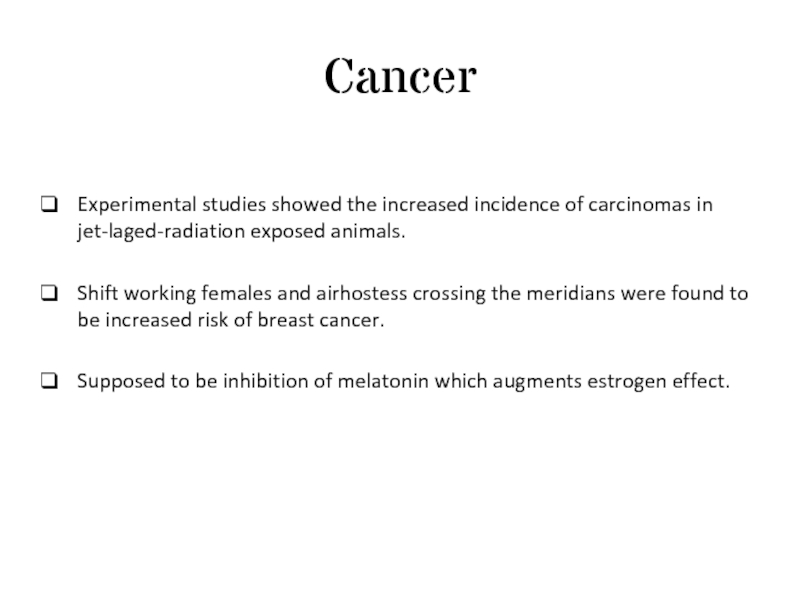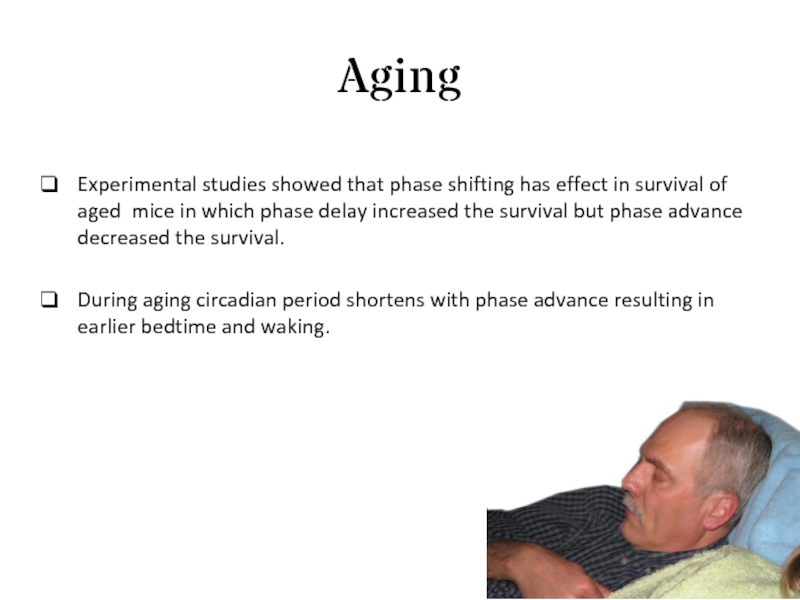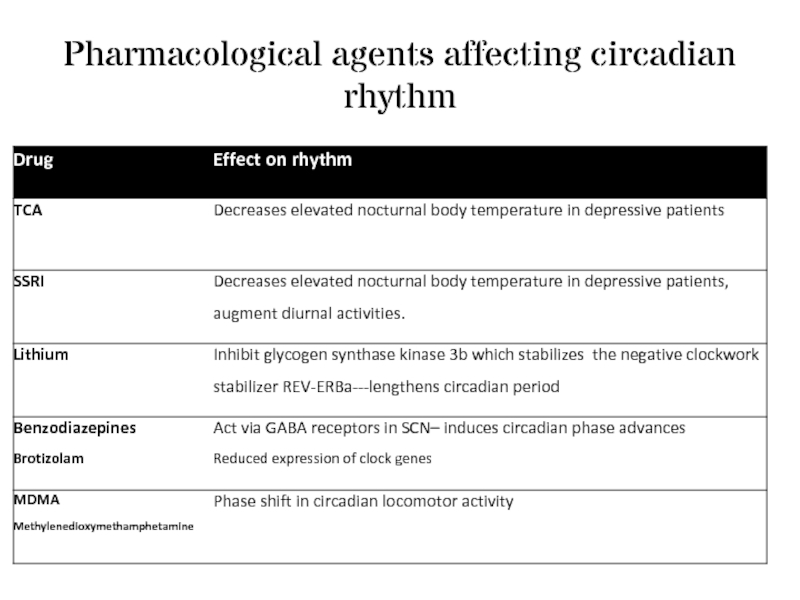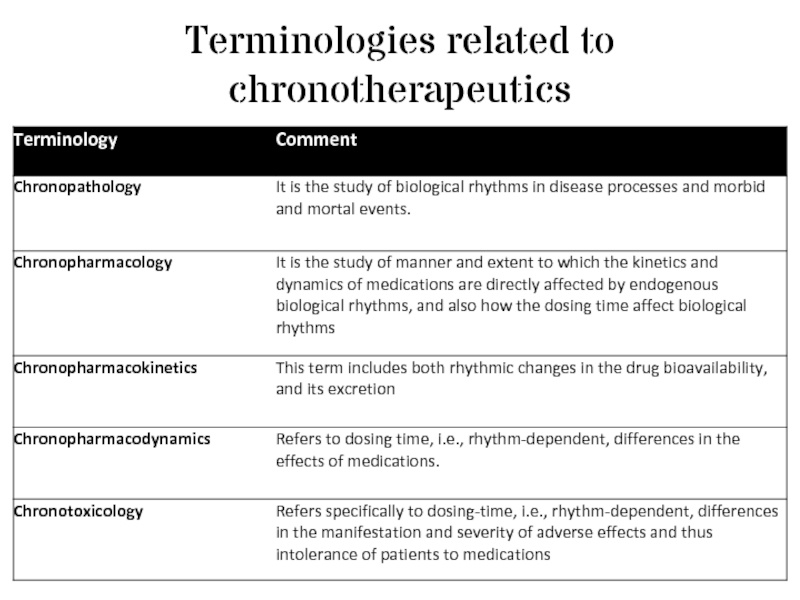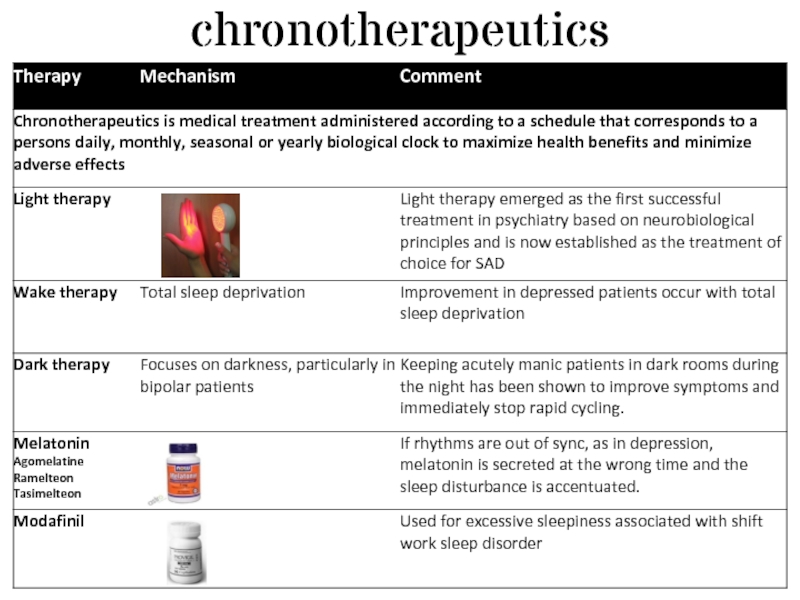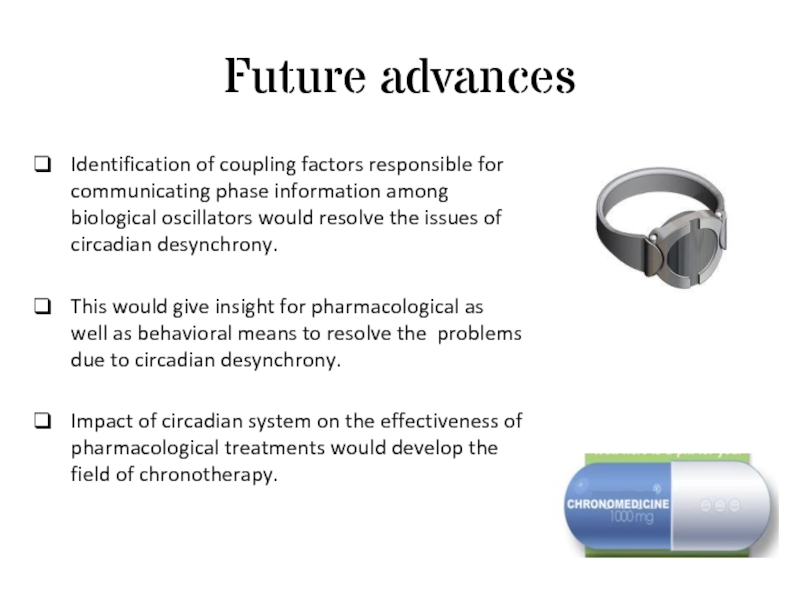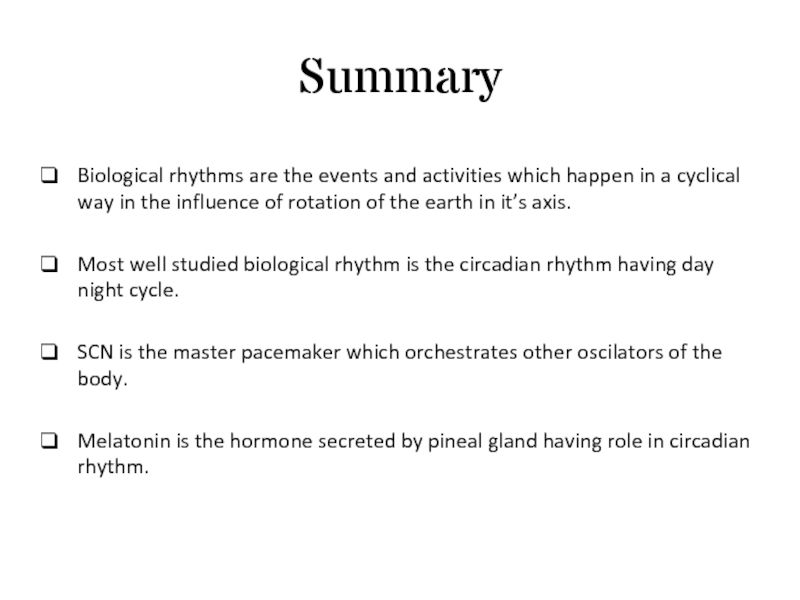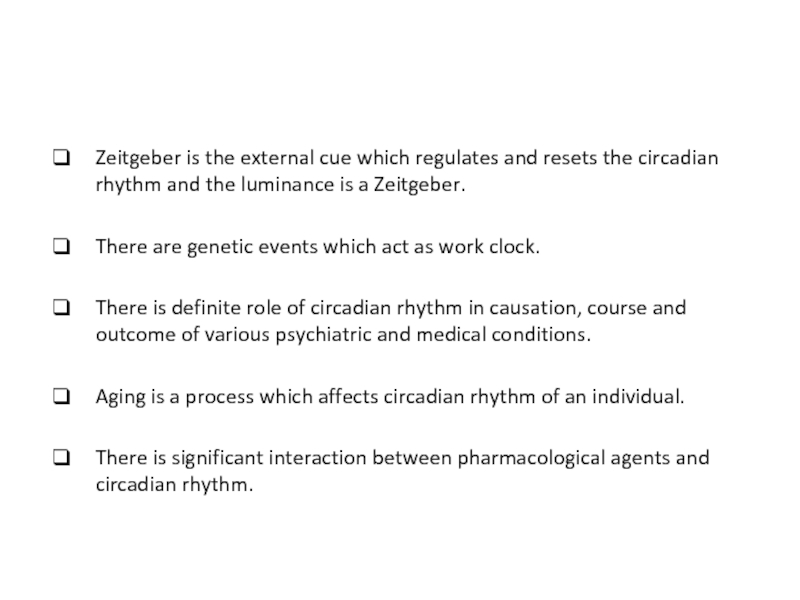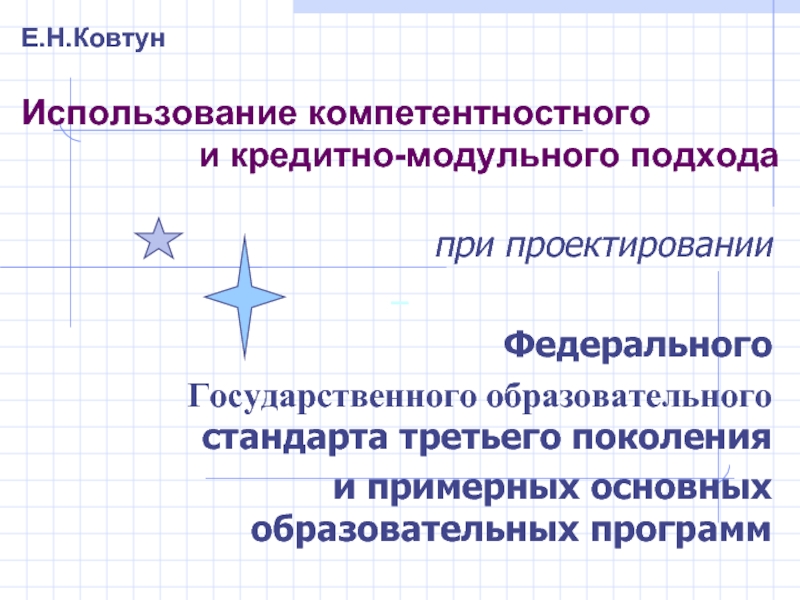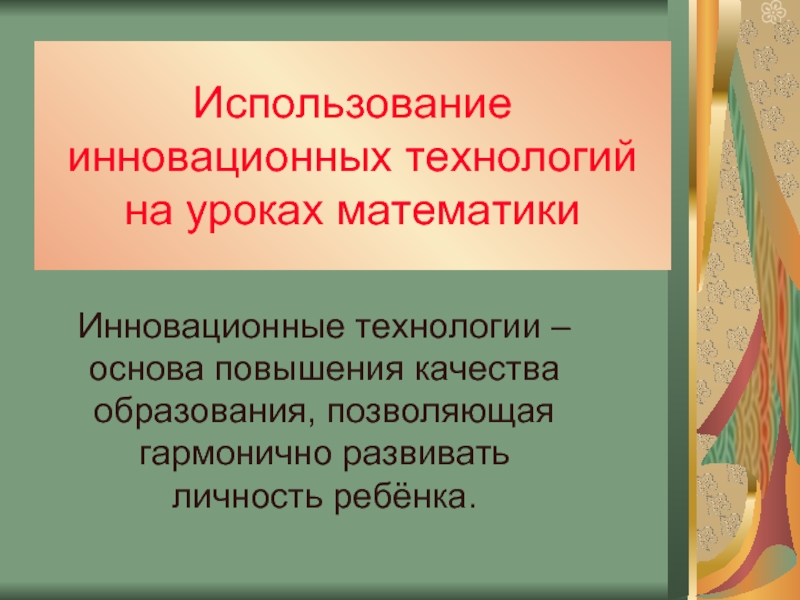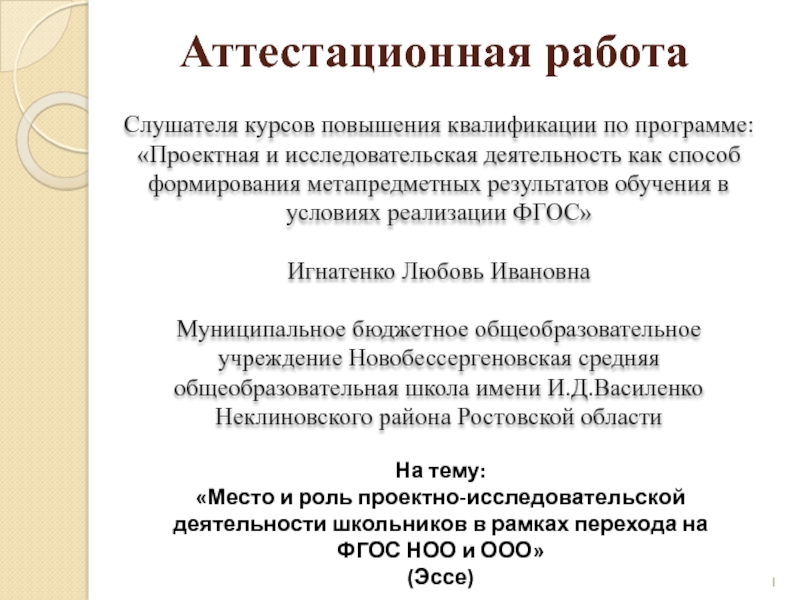- Главная
- Разное
- Дизайн
- Бизнес и предпринимательство
- Аналитика
- Образование
- Развлечения
- Красота и здоровье
- Финансы
- Государство
- Путешествия
- Спорт
- Недвижимость
- Армия
- Графика
- Культурология
- Еда и кулинария
- Лингвистика
- Английский язык
- Астрономия
- Алгебра
- Биология
- География
- Детские презентации
- Информатика
- История
- Литература
- Маркетинг
- Математика
- Медицина
- Менеджмент
- Музыка
- МХК
- Немецкий язык
- ОБЖ
- Обществознание
- Окружающий мир
- Педагогика
- Русский язык
- Технология
- Физика
- Философия
- Химия
- Шаблоны, картинки для презентаций
- Экология
- Экономика
- Юриспруденция
ChronobiologyOverview and it’s relevance in psychiatry презентация
Содержание
- 1. ChronobiologyOverview and it’s relevance in psychiatry
- 2. Chronobiological Terms
- 4. zeitgeber An environmental agent or event (as
- 5. Introduction of Chronobiology Study of biological time
- 6. History of Chronobiology
- 8. biological rhythms
- 9. Latin word circa means about and dies
- 11. Human circadian rhythms Sleep-wake cycle Body temperature
- 12. Pulsatile exocrine and endocrine secretions dependent on human circadian rhythm
- 13. functional components of circadian axis Master
- 14. Scn-master pacemaker A group of neurons present
- 15. The SCN is active during the day
- 16. Light
- 17. Afferent efferent and projections
- 18. Oscillations of protein production and degradation serves
- 19. The Biochemistry of Circadian Rhythms Cortisol
- 20. Melatonin Indoleamine,
- 21. Molecular clockwork Involves interaction and coordination between
- 22. In all cells, the expression of many
- 23. Resetting the circadian clock sensory parameters
- 24. Photosensitive apparatus required for resetting the circadian
- 25. Extraocular photoreception Photic stimulation of extraocular tissue
- 26. Novel class of retinal photoreceptors Studies in
- 27. Relevance in psychiatry Sleep regulation Seasonal
- 29. Sleep regulation Regulated by two mechanisms
- 30. Circadian rhythm sleep disorders1 Advanced sleep phase
- 31. Advanced sleep phase syndrome (ASPS) Characterized
- 32. Irregular Sleep-Wake Disorder (ISWD) Characterized by at
- 33. Jet lag When a person travels through
- 34. Seasonal affective disorders Seasonal affective disorder(SAD)
- 35. SAD Mechanisms Phase Shift Hypothesis 1 Phase
- 36. Winter SAD Called as winter depression or
- 37. Incidence 4-9% of total population 20% of
- 38. Non seasonal depression Depression causes the phase
- 39. With regard to MDD, almost all patients
- 40. schizophrenia Sleep-onset and maintenance insomnia is a
- 41. Relevance in medical conditions Obesity and metabolic
- 42. Obesity and metabolic dysfunction Experimental studies showed
- 43. Cancer Experimental studies showed the increased incidence
- 44. Aging Experimental studies showed that phase shifting
- 45. Pharmacological agents affecting circadian rhythm
- 46. Terminologies related to chronotherapeutics
- 47. chronotherapeutics
- 48. Future advances Identification of coupling factors responsible
- 49. Summary Biological rhythms are the events and
- 50. Zeitgeber is the external cue which regulates
Слайд 4 zeitgeber
An environmental agent or event (as the occurrence of light or
Any external or environmental cue that entrains, or synchronizes, an organism's biological rhythms to the earth's 24-hour light/dark cycle and 12 month cycle.
The term "zeitgeber" (German for "time giver" or "synchronizer") was first used by Jurgen Aschoff , one of the founders of Chronobiology
Common zeitgeber
Temperature
Social interactions
Pharmacological manipulation
Exercise
Eating/drinking patterns
Слайд 5Introduction of Chronobiology
Study of biological time in relation with cyclic rotation
Biological rhythm varies from milliseconds in ocular field potential to years
Circadian rhythm is the most extensively studied and best understood biological rhythm.
Chronobiology comes from the ancient Greek (chrónos, meaning "time"), and biology, which means “the study, or science, of life”
Слайд 9Latin word circa means about and dies means days, which has
Such rhythms persist in the absence of time cues
Self sustained biological rhythms characterized by a free-running period of about 24 hours (circa diem)
Circadian rhythm may be
Diurnal: organisms active during daytime
Nocturnal: organisms active in the night
Crepuscular: animals primarily active during the dawn and dusk hours
(ex: white-tailed deer, some bats)
Circadian rhythms
Слайд 11Human circadian rhythms
Sleep-wake cycle
Body temperature
Behaviour
Food and water intake
Hormones
Metabolism
Body fluids
Expression of
Слайд 13functional components of circadian axis
Master pacemaker situated in SCN
Afferent-- Photoreceptive input
Efferent-- Rhythmic outputs which provide insight into the clockwork of the circadian pacemaker.
Слайд 14Scn-master pacemaker
A group of neurons present in anterior hypothalamus located dorsal
Master oscillator-- generates the mean circadian rhythm and orchestrates a multitudes of slave oscillators found in peripheral tissues like kidney, liver, lungs & other sites of the brain.
The neurons of the SCN are among the smallest neurons in the entire brain.
They possess short dendrites that are not extensively branched.
Слайд 15The SCN is active during the day in both diurnal and
The SCN tells the animal whether it’s day or night, but not how to behave.
Transplants of SCN establish donor rhythms in recipient animals.
SCN & light/dark cycles
Слайд 16
Light
Exercise
Food
Social factors
EYE
Master clock: SCN
“Zeitgeber” (time givers) “entrain” clock
Pineal Gland
Regulates Hormones
Слайд 18Oscillations of protein production and degradation serves as the “ticking” of
Light may participate in the triggering of some of these protein fluctuations.
How the biological clocks work
Environmental cues
Sensory
receptors
Pace-maker
Locomotion
Hormone release
Feeding
Others
Clock-setting
pathway
Clock
mechanism
Observed
behaviour
Слайд 19The Biochemistry of Circadian Rhythms
Cortisol
Release is highest in the morning
Glutamate
Released by the retinohypothalamic tract during light
Melatonin
Released only at night (by the retina and the pineal gland).
Слайд 20Melatonin
Indoleamine, a circadian regulated hormone the synthesis of which is
Serum level of melatonin is elevated at night and returns to baseline during the day.
Light shifts the phase of melatonin synthesis and suppresses the elevated melatonin level.
Слайд 21Molecular clockwork
Involves interaction and coordination between the positive and negative transcriptional
The products of per and cry genes translocate back into the nucleus and repress their own transcription.
Orphan nuclear receptor gene Rev-Erb alpha also regulates the CLOCK-BAML1 then per and cry genes.
Enzymes kinase and phosphatase also act upon the gene products and has role in molecular clock work.
Слайд 22In all cells, the expression of many genes changes rhythmically over
Specific circadian genes such as CLOCK, BMAL1, and PER are responsible for the main SCN clock working machinery as well as subsidiary clocks in other parts of the body.
Слайд 23Resetting the circadian clock
sensory parameters
The mean circadian period generated by the
In human light is the most effective agent for entraining the circadian system
Bilateral removal of eyes– incapable to reset circadian clock, indicating that the photosensitive apparatus necessary for resetting must be ocular
To maintain the proper phase relationship of behavioral and physiological process circadian clock should be resetted in a regular basis within a context of 24 hours a day.
Слайд 24Photosensitive apparatus required for resetting the circadian clock is different from
The light intensity required to activate such apparatus having high threshold is of low i.e. 3 log unit for longer duration than of visual system.
Eyes may retain the function in clock resetting despite being useless for vision.
Слайд 25Extraocular photoreception
Photic stimulation of extraocular tissue is sufficient to shift the
Blue light illumination of highly vascularized tissue like popliteal region behind the knee---shown to phase shift the nightly increase of melatonin
Currently this is not widely accepted and further research is needed
Слайд 26Novel class of retinal photoreceptors
Studies in blind human and retinally degenerate
Rodent retinal ganglion cells found to be intrinsically photosensitive
These cells contain Melanopsin– photo pigment initially discovered in melanophores of tadpoles– later identified in human retina
Melanopsin is also localized in plasma membrane of cell body, axon and dendrites
Plays important role in phase shifting of circadian locomotor activity
Слайд 27Relevance in psychiatry
Sleep regulation
Seasonal affective disorders
Non seasonal depression
Schizophrenia
Слайд 29Sleep regulation
Regulated by two mechanisms
Sleep homeostat
Related to the accumulation and dissipation
Adenosine is supposed to be a neuromodulator of the sleep homeostat.
Circadian cycle/clock
Controls a daily rhythm in sleep propensity or conversely, arousal.
Arousal steadily increases throughout the day, reaching a maximum immediately before the circadian increase in plasma melatonin.
Слайд 30Circadian rhythm sleep disorders1
Advanced sleep phase syndrome
Delayed sleep phase syndrome
Free-running type
Irregular
Jet lag
Shift work type
1 Circadian Rhythm Sleep Disorders: Part I, Basic Principles, Shift Work and Jet Lag Disorders
An American Academy of Sleep Medicine Review
Robert L Sack, MD; Dennis Auckley, MD; R. Robert Auger, MD; Mary A. Carskadon, PhD; Kenneth P. Wright Jr, PhD; Michael V. Vitiello, PhD; Irina V. Zhdanova, MD
Слайд 31Advanced sleep phase syndrome (ASPS)
Characterized by bedtime and wake-up time
People with ASPS may fall sleep at 6 or 8 p.m. and awaken about eight hours later.
An autosomal dominant familial form (FASPS): 4 hour advance of daily sleep wake rhythm(7:30pm-4:30am)
ASPS is related to the single nucleotide polymorphism in period gene
Delayed sleep phase syndrome (DSPS)
A circadian sleep disorder in which the individual's internal body clock is delayed with respect to the external day/night cycle
Falls asleep late at night, typically between 1:00 am and 6:00 am, and awakens in the late morning or in the afternoon.
Слайд 32Irregular Sleep-Wake Disorder (ISWD)
Characterized by at least three sleep episodes per
Most commonly occurs in elderly persons with dementia.
Also occurs in some children with developmental disorders, including autism spectrum disorders.
Can be a consequence of brain tumors or traumatic brain injury
Free running/ Non-24-Hour Sleep-Wake Disorder (Non-24)
Rhythms, which reflect the intrinsic oscillation of the circadian pacemaker when it is not influenced by environmental time cues.
Circadian sleep disorder in which an individual falls asleep later each day.
Generally the delay is about an hour or two, corresponding to a circadian cycle of 25 - 26 hours; but some individuals with Non-24 exhibit a much longer delay, especially those who have lived with Non-24 for many years.
Слайд 33Jet lag
When a person travels through the different time zones there
In jet lag the clock is slow to reset, so that after time zones have been crossed, the endogenous signals for sleep and wakefulness do not match the local light–dark and social schedules1
Travelling from east to west will have phase advance while reverse would be in opposite direction.
Symptoms include reduced alertness, day time fatigue, loss of appetite, reduced cognitive skills and disruption of sleep/wakefulness
Shift work schedule
When a person works against the natural day-night schedule he/she would suffer from disruption of circadian rhythm.
1 The New England Journal of Medicine
Jet Lag; Robert L. Sack, M.D.
N Engl J Med 362;5 February 4, 2010
Слайд 34 Seasonal affective disorders
Seasonal affective disorder(SAD) is a form of a
In DSM-IV, it is not categorized as a distinct mood disorder but as the seasonal pattern specifiers.
Full remissions(or a change from depression to mania or hypomania) also occur at a characteristic time of the year.
Two major depressive episodes meeting criteria A and B have occurred in the last 2 yrs and no non seasonal episodes have occurred in the same period.
Seasonal major depressive episodes substantially outnumber the non seasonal episodes over the individual’s lifetime.
Слайд 35SAD Mechanisms
Phase Shift Hypothesis 1
Phase delay in body
Melatonin Dysregulation 2
Secretion is
Serotonin Deficiency
L-tryptophan is a precursor of serotonin
Genetic Abnormalities
Based on epidemiology studies; serotonin transporter or clock gene defects
Samir Malhotra, Girish Sawhney, Promila Pandhi (2004) The Therapeutic Potential of Melatonin: A Review of the Science. MedGenMed. 6 (2): 46
Alfred J. Lewy, Bryan J. Lefler, Jonathan S. Emens, and Vance K. Bauer.(2006) The circadian basis of winter depression. PNAS; 103; 7414-7419
Слайд 36Winter SAD
Called as winter depression or winter blues.
Onset in the late
Symptoms may be atypical to major depression
Significant increase in weight
Increase rather than decrease in sleep
Hyperphagia
Heightened sensitivity to interpersonal rejection
Leaden feeling in the extremities.
Слайд 37Incidence
4-9% of total population
20% of population may have sub syndromal features.
M:
Runs in families showing genetic or environmental influences
Serum level of melatonin is considered as causative condition.
Treatment
Light therapy
High irradiance(5,000 -10,000 lux) for about 45 – 90 minutes.
Early morning or evening pattern of exposure.
Pharmacotherapy
MAO inhibitors.
Cognitive behavioral therapy
Comorbidity
Bulimia nervosa
Premenstrual dysphoric disorder
Alcoholism
Слайд 38Non seasonal depression
Depression causes the phase delay while mania causes phase
Sleep disturbances can contribute to the pathogenesis of disease.
Total sleep deprivation provides a transient antidepressant effect in a majority (~60%)of depressed patient.
No difference is observed in the efficacy of such treatment with or without medicine.
Relapse occurs after the following night sleep even day time short napping among which early morning is critical.
Слайд 39With regard to MDD, almost all patients present with sleep disturbances
Sleep disruption is a major symptom in depression, with over 90% of patients showing sleep complaints that affect daytime functioning
There may be delayed sleep onset, terminal insomnia, decreased N3-N4 sleep, increased phasic REM density, decreased REM latency, fragmented sleep and day time napping
Insomnia often appears before the onset of mood disorder symptoms and may persist into clinical remission
Sleep difficulties are often are the key factor that causes depressed patients to seek medical help
Слайд 40schizophrenia
Sleep-onset and maintenance insomnia is a common symptom regardless of either
Regarding sleep architecture, NREM-N3 sleep and REM sleep onset latency are reduced whereas REM sleep duration tends to remain unchanged.
Many of these sleep disturbances are caused by abnormalities of the circadian system as indicated by misalignments of the endogenous circadian cycle and the sleep wake cycle.
Circadian disruption, sleep onset insomnia and difficulties in maintaining sleep could be partly related to a presumed hyperactivity of the dopaminergic system and dysfunction of the GABAergic system
Sleep and circadian rhythm dysregulation in schizophrenia
Progress in Neuro-Psychopharmacology & Biological Psychiatry, Elsevier; 2013
Слайд 41Relevance in medical conditions
Obesity and metabolic dysfunction
Cancer
Effect of aging
The circadian pattern
Слайд 42Obesity and metabolic dysfunction
Experimental studies showed the relation between blood lipid,
Shift workers have more incidence of having metabolic syndrome characterized by:
Hyperglycemia
Hypoinsulinemia
Dyslipidemia
Visceral obesity and the complications following such conditions.
Слайд 43Cancer
Experimental studies showed the increased incidence of carcinomas in jet-laged-radiation exposed
Shift working females and airhostess crossing the meridians were found to be increased risk of breast cancer.
Supposed to be inhibition of melatonin which augments estrogen effect.
Слайд 44Aging
Experimental studies showed that phase shifting has effect in survival of
During aging circadian period shortens with phase advance resulting in earlier bedtime and waking.
Слайд 48Future advances
Identification of coupling factors responsible for communicating phase information among
This would give insight for pharmacological as well as behavioral means to resolve the problems due to circadian desynchrony.
Impact of circadian system on the effectiveness of pharmacological treatments would develop the field of chronotherapy.
Слайд 49Summary
Biological rhythms are the events and activities which happen in a
Most well studied biological rhythm is the circadian rhythm having day night cycle.
SCN is the master pacemaker which orchestrates other oscilators of the body.
Melatonin is the hormone secreted by pineal gland having role in circadian rhythm.
Слайд 50Zeitgeber is the external cue which regulates and resets the circadian
There are genetic events which act as work clock.
There is definite role of circadian rhythm in causation, course and outcome of various psychiatric and medical conditions.
Aging is a process which affects circadian rhythm of an individual.
There is significant interaction between pharmacological agents and circadian rhythm.
